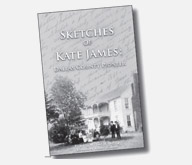Donate
Please consider supporting our efforts to preserve Garland's history by donating here:
See More

- Details
- Category: Uncategorised
- Hits: 57670
Donate
Please consider supporting our efforts to preserve Garland's history by donating here:
- Details
- Category: Uncategorised
Donate
Please consider supporting our efforts to preserve Garland's history by donating here:
- Details
- Category: Uncategorised
- Hits: 8756
This article originally appeared in the Garland/Mesquite section of the Dallas Morning News on Friday, June 9, 1995
By Michael R. Hayslip
Rowlett asks: What’s in a name?
For every name there is a reason. Not so in Rowlett, where the source of the city’s name is still unclear.
The town of Rowlett was christened soon after a Missouri, Kansas & Texas Railroad chugged through in 1886. The train station stood in a community called Pleasant Valley, but residents of the area received mail through the post office in Morris, a community to the southeast. Something had to give, so the town itself was dubbed Rowlett as a compromise.
This account came for Miss Irma Buhler, writing as Rowlett correspondent for the anniversary edition of The Garland News in 1912. With fewer than 250 people to account for and no newspaper in town, she omitted any mention of the reason or procedure by which the name Rowlett was selected.
Some old-timers speak generally about a possible source: a 19th century surveyor named Rowlett who staked our expanses of acreage in and around the town, possibly for the railroad.
The venerable Handbook of Texas, published by the Texas State Historical Association, offers two contradictory versions of the town’s naming. One is that the namesake was a “George Rowlett, who settled in the vicinity prior to 1848.”
Another attributes the name “to a lone Indian who used to camp on the creek.” Because Rowlett would have been a peculiar name for an Indian then, this theory implies that somehow he (or she) may have named either the town, the creek or both after someone else.
Officials at the association point out that research for the publication began in the late 1940s under the direction of Walter Prescott Webb, a celebrated Texas historian who employed graduate students and other temporary help to assist him.
Who gave him the Rowlett stories may – but may not – be reflected in records that have been stored in a place which is “not easily accessible.” A revision in progress is due for publication in 1996, but no decision has been made about changes in Rowlett’s origins.
Rowlett Creek, according to the Handbook, “was probably named for Daniel Rowlett, who patented land crossed by the creek in Collin County.”
Most of Daniel Rowlett’s tracks appear to the north in Fannin County, where in 1837 he led the group that petitioned for creation of the county. Tom Scott of the Fannin County Museum of History in Bonham notes that he was self-instructed as a surveyor and land agent, attorney and doctor. Hence he called himself Dr. Rowlett when he arrived in Texas in 1835. In 1842 he claimed a first-class headright land grant certificate for 1,782 acres in Fannin County and 2,823 acres in present-day Collin County.
Since he completed a 90-day enlistment in the army of the new Republic of Texas, Dr. Rowlett also received a bounty warrant for military service. This warrant was exercised for 320 more acres in Collin County, through the middle of which runs the same Rowlett (formerly Rowlett’s) Creek that passes the City of Rowlett en route to Lake Ray Hubbard. Having married and sired four children by a third wife who was 28 years his junior, Dr. Rowlett died in 1848. He had no relative named George Rowlett, but did have a son named Daniel Owen Rowlett, born in 1840.
Wording on the Rowlett historical marker in front of City Hall states that “although the origin of the name is not clear, it may have come from Daniel Owen Rowlett, a surveyor for the Mercer’s Colony.” Since the Mercer’s Colony was authorized in 1844, “a surveyor could have referred to Dr. Daniel Rowlett.
But by approving the marker application in 1985, the Texas Historical Commission cast into aluminum a position opposed to both city-name accounts of the Texas State Historical Association.
- Details
- Category: Uncategorised
- Hits: 19187
Sketches of Kate James - Dallas County Pioneer
 The text illuminates writings of Kate James, a settler who arrived with her family by wagon in 1855. In most ways representative of the local norm, that family included a budding historian who recorded her lifetime of observations with monographs about friends, family and activities in the neighborhood of present Garland, Texas. Sketches offers more than genealogies of Garland’s old families. Expanding from excerpts published in The Garland News during 1927, its 160 pages illuminate life throughout Kate’s neighborhood as it developed from the 19th to the 20th century. Annotated, illustrated and indexed are recollections of education, religion, recreation, crime, farming, home building and the folks involved. Even mortuary practices are detailed. And the Civil War erupts in the middle of it all. Through Kate’s Sketches today’s reader can almost join her experience of life in the early days.
The text illuminates writings of Kate James, a settler who arrived with her family by wagon in 1855. In most ways representative of the local norm, that family included a budding historian who recorded her lifetime of observations with monographs about friends, family and activities in the neighborhood of present Garland, Texas. Sketches offers more than genealogies of Garland’s old families. Expanding from excerpts published in The Garland News during 1927, its 160 pages illuminate life throughout Kate’s neighborhood as it developed from the 19th to the 20th century. Annotated, illustrated and indexed are recollections of education, religion, recreation, crime, farming, home building and the folks involved. Even mortuary practices are detailed. And the Civil War erupts in the middle of it all. Through Kate’s Sketches today’s reader can almost join her experience of life in the early days.
Edited by Michael R. Hayslip and published with support from The Summerlee Foundation, Sketches is available in both hard and soft cover editions.
When ordering, please mail payment to Garland Landmark Society, P.O. Box 462232, Garland, TX 75046
Click here to order SKETCHES OF KATE JAMES on line
